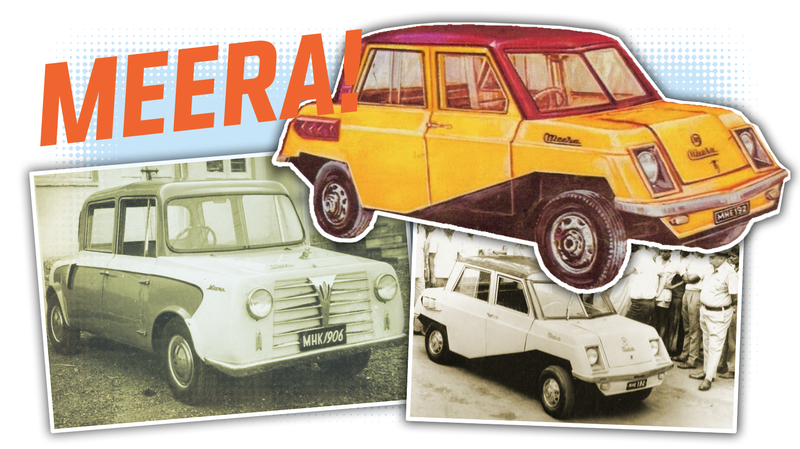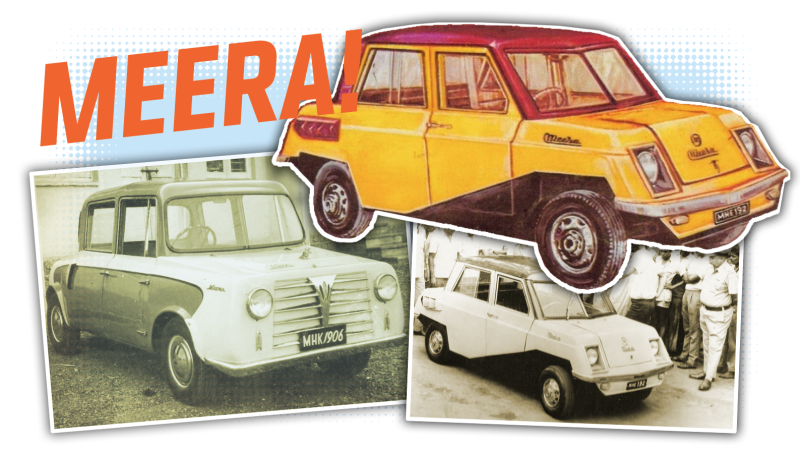
I’ve made no secret of my admiration for the Tata Nano. Okay, thanks to ridiculous cultural fixations on status, the $2,500 new car never really achieved the success I think it deserved, but it’s still a triumph of automotive engineering. What I didn’t realize was that the Nano had a spiritual ancestor, also from India. A small, highly affordable car designed to put even the poorest family on wheels. A car that had been one man’s dream for decades. The man was Shankarrao Kulkarni, and the car was the Meera.
Kulkarni, though his schooling ended when he was around 12 years old, Kulkarni went on to become a respected and well-known engineer. In 1945 he decided he wanted to produce an affordable people’s car for India, and developed the first, two-seat prototype in 1949.
By 1951 he had a three-seat prototype, and then built another prototype in 1960. These cars had an interesting design, one that followed a lot of mid-century small, cheap car thinking: rear air-cooled engine, light weight, with some clever cost-saving innovations like all-rubber suspension, which Kulkarni claimed saved
“…over 100 spare parts and also ensures that when you cross a stone, the shock is not transferred to the other wheel as is done by the shaft. It also increases the life of the wheel. The ground clearance of the car can be kept from 6 to 11 inches. It should be increased when traveling on a rugged road and reduced when traveling in speed on a smooth road.”
Advertisement
The 1951 prototype got nearly 50 MPG and could, with its 19 horsepower air-cooled inline-twin, hit 55 MPH. Or, at least, that’s what that little placard claims.
Another prototype followed in 1960, and by 1970 the final design of the Meera had been established. Following the ‘70s wedgy styling influences, this latest Meera was still small, still had three doors (one on driver’s side, two on the passenger side), and was still rear-engined.
Advertisement
By 1975 Shankarro Kulkarni had what he hoped would be the production-spec Meera. It now had a water-cooled V-twin engine making a bit less power than before—14 horsepower, with four forward gears, but it still got nearly 50 MPG. It was a small but practical four-seater with a small forward trunk, decent basic transportation for very little money.
I think the final version is pretty cool-looking, too, especially considering the era. It has a ‘70s modern, almost sci-fi feel about it that must have felt very fresh and up-to-date to Indians used to seeing Hindustan Ambassadors all over the place.
Advertisement
The plan was to sell the 1975 Meera for 12,000 rupees, which, adjusted for inflation, would be around $3,500 in U.S. dollars today, a price very close to what the Tata Nano would one day sell for.
Unfortunately, according to Kulkarni’s grandson “red tape and bureaucracy” prevented the car from going into production. Kulkarni even drove the car to Mumbai for an exhibition, and despite the Jaysinghpur municipality offering him free land for a factory, Kulkarni was unable to get the required government assistance needed, and by 1975 Suzuki had made their plans to enter the Indian market, effectively squashing Kulkarni’s efforts with their sheer size, industrial might, and money.
Advertisement
Over 30 years later, the Tata Nano finally picked up the mantle of an Indian-designed car cheap enough for nearly any Indian family to afford. Kulkarni’s family wanted to be one of the first buyers of the Nano in 2008, as they saw it as a late realization of their grandfather’s dream of mobility for all Indians.
(Thanks to Samuel for showing this to me!)













